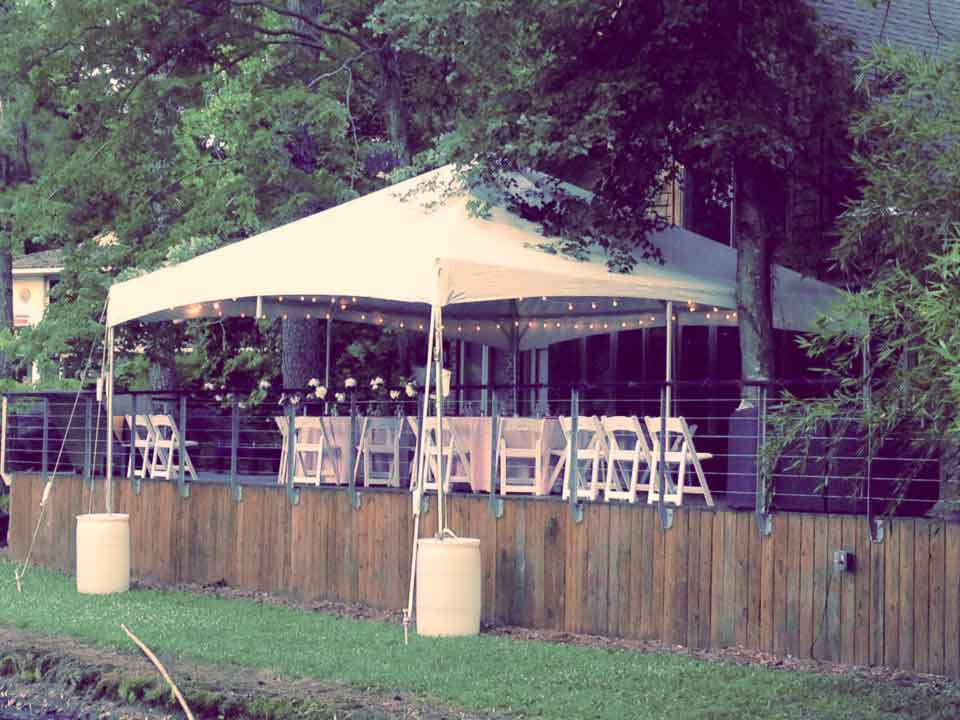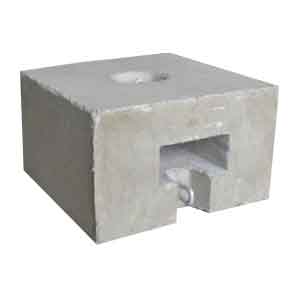TRD Ballasting Tool

The Tent Rental Division (TRD) of the Industrial Fabrics Association International (IFAI) would like to take a moment to explain the TRD Ballasting Tool, why and how it was developed, why it produces the results that it does, and how it benefits the industry.
The goal of the Ballasting Study was to determine the friction coefficient of the various types of ballast on different surfaces to develop a systematic approach to ballasting tents. Before the study was undertaken, TRD conducted a multi-year educational and research campaign with TRD members to explain the goals of the study and gather feedback on what the study should entail. The study moved forward with 90 percent approval from the membership and full support from both renters and suppliers.
Clemson University was chosen to conduct the study. The overall goal was fairly simple. The industry needed a tool that could convert the recommended staking loads required by manufacturers and/or codes into the equivalent ballast weights. At the time, the only way to obtain approved ballast requirements was either through expensive site-specific engineering or from tent manufacturers. TRD’s rental members desired a way to quickly and accurately convert the required stakeholding requirements for a tent into ballast weight.
The study established the following criteria:
- What are the most common ballast configurations? The study identified four and named them A–D.
- What are the most common types of ballast used? Cement, barrels, blocks, etc.
- What are the most common surfaces ballast is used on? Grass, asphalt, concrete, dirt, gravel, etc.
- How will the ballast be attached to the tent? Guylines, plates, etc.
- What are the dimensions of the ballast and what is its proximity to the tent? This plays an important role in the way ballast functions and its holding power.
The team that collected these requirements included renters, suppliers, engineers, and IFAI staff.
The study defined failure modes for each of the ballast configurations. These included any sliding, uplift, or tilting of the ballast and used physics to identify a ratio between the recommended stake requirements of tents and how much ballast it takes to achieve them. It is critical to understand that when ballasting, one pound of dead weight will not equal one pound of load resistance rate. Because ballast can slide, tilt, tip, or be lifted, a factor must be applied to identify the amount of deadweight required to achieve the load resistance. As a result, the study calculations accounted for all of these variables to determine the ballast weight required. Ballast weight will always be higher than the load requirements.
IFAI continues the process of updating the different configurations for the ballasting of tents. Changes include the use of modifiers to keep the ballast from slipping and the attachment points of the guys to assure that installers take advantage of the ballasting application. These will be updated soon for TRD member’s use.
After testing thousands of scenarios using the established criteria, the Clemson team developed formulas for the Ballasting Tool, and the tool was launched for TRD members. For the cost of an IFAI membership—a cost that is a fraction of the cost of site-specific engineering for a single installation—a tent renter could have unlimited access to the tool. The tool requires the minimum inputs needed to calculate the conversion, and it does not take long to learn how to use it.
The tool had two immediate implications. It revealed that:
- The industry was not using enough ballast.
- The coefficient of friction and the basic geometry of ballasts such as water barrels made them unsafe.
As a result, the tool raised the bar in terms of how tents are ballasted, and it has largely eliminated the use of water barrels as ballast.
To clear up a few misconceptions, TRD emphasizes the following:
· The Ballasting Study was not pursued with the goal of achieving a favorable result for the installers but rather to produce results that would provide the public with safe tents.
· The study does not provide the installer with the input for the stakeholding requirement. That comes from the manufacturer and/or a code requirement.
· The tool does not add any additional factors of safety to the calculations unless the user adjusts it to do so.
TRD members can look forward to the introduction of the Non-engineered Ballasting Study, which will be integrated into the current TRD Ballasting Tool and will be used to calculate the ballasting requirements for tents that are not engineered or for applications that do not require full engineering for installation. This additional research will show the requirements for tents with and without sidewalls and will take into account the various styles of frame tents, widths, lengths, heights, anchor points down each side, and wind load criteria that must be met.
Also, the TRD Education Committee is busy working on Best Practices for Ballast Attachment. This has become more relevant as the weight and size of ballast have an effect on the overall application of ballasting techniques. These attachment points are vital in ensuring safe ballasting. TRD has found that one method does not fit all applications and could lead to premature failure if not attached correctly.
For decades, TRD has been an industry leader in the development of tools that promote the safe installation of tents for the rental marketplace. TRD’s Training for the Tent Installer training modules have been in place since the late 1990s and have been used by organizations including ARA, MATRA, TRAM, and TRANE in addition to the boot camps hosted by IFAI. TRD has expanded these programs to reach code officials and fire marshals as well. In 2006, IFAI introduced the Staking Study to the rental industry. Once this program was in place, it proved to be one of the most valuable assets to TRD membership. The Ballasting Study and the upcoming non-engineered ballasting study and best practices continue this progress. IFAI is adamant about safe tent installations, and we want our industry to be accident-free.

